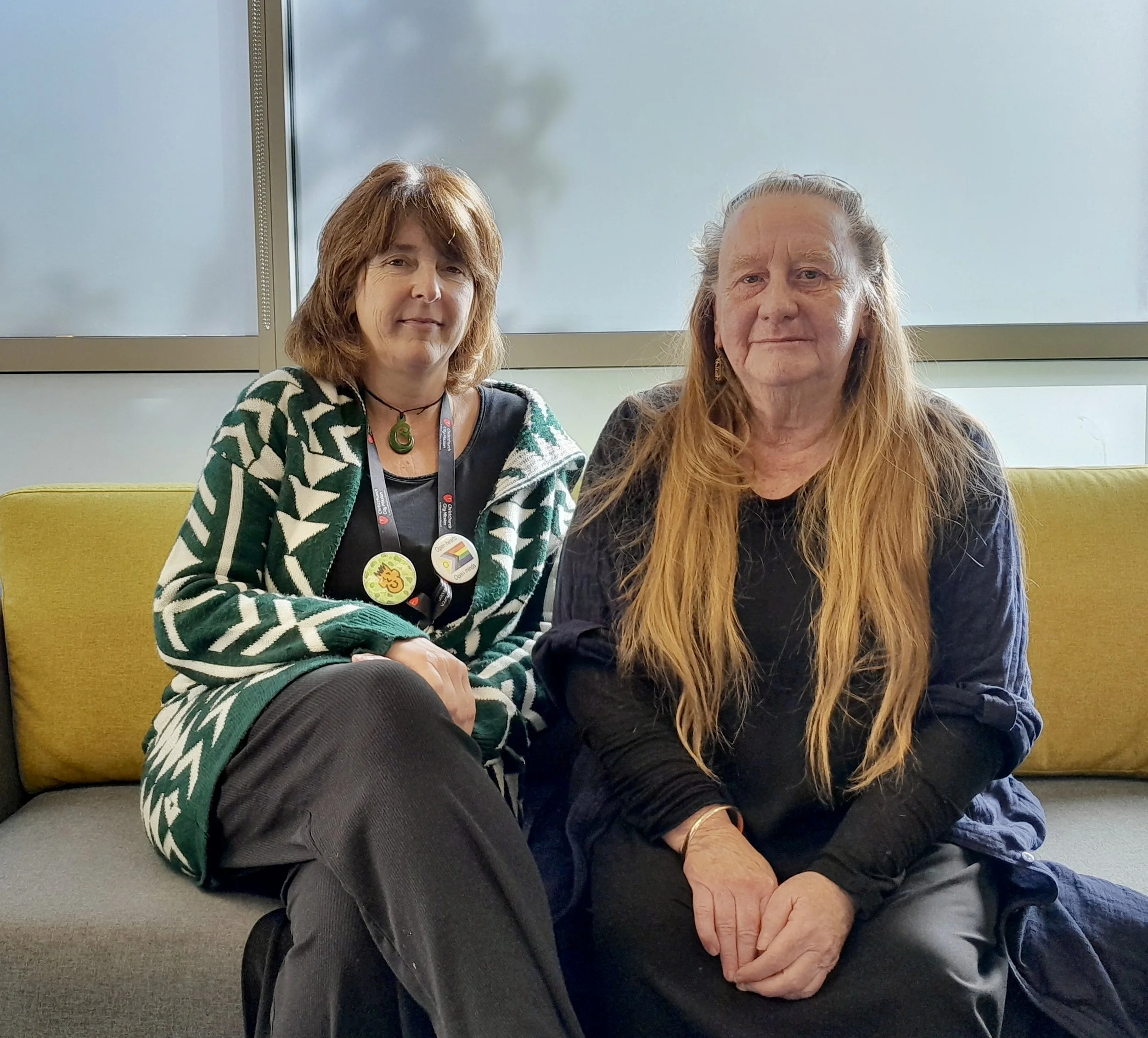Exciting new way to fight homelessness
Some of those who sleep on our streets are stuck in a recurring cycle of homelessness. But a revolutionary approach to help them break free is being developed at the Christchurch City Mission.
Annette Sutherland was driving to the Christchurch City Mission to help develop a Ready to Rent course for clients who were being prepared for a new life in housing, But after a three-decade career finding homes for people, the Comcare manager felt uneasy about the course. Something was not right.
Harriet English, City Mission Client Education Facilitator and Annette Sutherland, Comcare Manager
These courses are common enough with advice on things like rent, bonds, landlord rights, power costs, budgeting etc. But this felt like something for university students starting flatting rather than for street-hardened former rough sleepers. “It just felt off tone, almost patronising. People are not losing housing because they don’t know enough about bonds,” she thought.
At our learning hub she talked this over with Harriet English, who runs our client education work. Harriet agreed it was just going through the motions. Instead, they started talking about what was really behind people repeatedly going back to the streets.
Annette said it seemed like three months was often the breaking point when they started reacting against being in the house. Things including the house beginning to get on their nerves. Eventually they might trash it, or just up and leave to go back to the streets.
One former client who had spoiled chance after chance to have a house explained it like this when she asked what he had been thinking before he walked out the door:
‘I just looked around at the walls and I couldn't stand it anymore. You don't understand. Homelessness is a fulltime job. You're always doing stuff. You’ve got people to talk to, people to run away from, you've got things to find out like where to eat, what the gossip is, where your drugs are, where to sleep. You don't have to think.
I looked around the walls and there was nothing. Just silence. I don't want to think about my past, and I know I haven't got any future. It was like a cage. So I put my pack on and I ran.”
Annette also told Harriet about an insight from a former colleague at women’s refuge when Annette had asked her why women went back to where they were being abused. The worker said among the many reasons was what she called “excited misery”. If women had been in an abusive environment for a long enough time with constant stress and fear, somehow her body physically needed the drama of always being at risk. It became very uncomfortable to be still and safe.
Another pre-disposition to self-sabotage was deep feelings of unworthiness to have a house, especially for a woman if she had lost her kids.
Harriet said all this made sense to her when thinking about the clients she worked with. So she said ‘Let’s do it. Let’s talk to them about this stuff instead of Ready to Rent’. They couldn’t find anything anywhere else taking this approach, so Harriet wrote a new five-week course based around the ideas. Right from the first meeting it was obvious something powerful was happening.
As Annette and Harriet talked about how housing could be lost when people who had suffered trauma were unable to cope with having a place to stay, it was like a shock going around the room. “That’s me, that’s exactly me,” they heard in gasps from the clients. They recognised themselves in the descriptions. Then came the flickers of hope.
Harriet and Annette told them if they recognised the triggers for self-sabotage coming, then there were ways to hold it together and push through the three-month mark. They had a new chance.
Another part takes an honest look at the benefits of being homeless, yes that’s right, the good bits. The bad parts are obvious and our clients are often looked down on for choosing to live on the streets. But sometimes they are being smart and very human.
If they have a benefit they have more money if they are skipping paying rent. They get to be part of a community and, because it is a community seen negatively by many others, the bonds are tighter. They are free. They can go where they want and don’t need to check in with anyone. Life is always busy.
“Thank you for keeping me safe and dry.”
But, as Harriet explained, the secret was to help them get as many of these good feelings as possible while being housed, so transferring the things they valued to a house.
We are still running pilot studies and developing the course, and the City Mission clients know they are helping with this. The idea has been presented at a national conference and there is a lot of excitement within other agencies at this new tool being developed to address long-term homelessness.
A quiet, older Māori man was in one of the first courses. He hadn’t said much but had been listening very carefully.
At the end of the course, Annette asked him what he was going to do if he had a place to stay but the urge to leave, or act up so he had to leave, swept over him.
“I’ll show you,” he told her.
He stood, walked over to a wall, reached up high to put his hand flat on the wall and said: “Thank you for keeping me dry and safe.”

